Read the complete list of interview questions prepared for instrument technicians, instrument engineers and instrumentation specialists.
Instrument Technician Interview Questions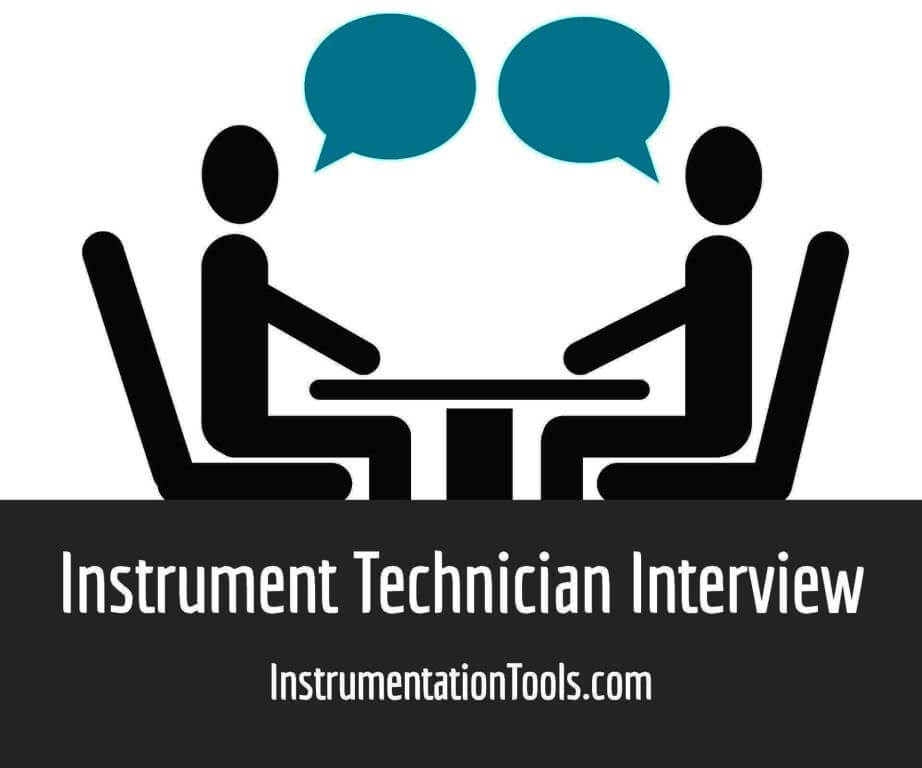
What is a Thermocouple?
A thermocouple consists of two dissimilar metals, joined together at one end, which produce a small voltage when heated (or cooled). This voltage is measured and used to determine the temperature of the heated metals. The voltage for any one temperature is unique to the combination of metals used.
Are There Standards Governing Types of Thermocouple?
British Standards Specification, BS 1041, Temperature Measurement provides guidance for the selection and use of devices for measuring temperature.
ASTM Standard E230 provides specifications for the common industrial grades, including letter designations.
Why are there different types of thermocoples?
Thermocouples are available in different combinations of metals, usually referred to by a letter, e.g. J, K etc.
Each combination has a different temperature range and is therefore more suited to certain applications than others. Although it is worth noting that the maximum temperature varies with the diameter of the wire used in the thermocouple.
Why are straight lengths important in installing a vortex/orifice devices?
Like most flow devices, a Vortex flow meter requires a well developed and symmetrical flow velocity profile, free from any distortions or swirls if it is to give good accuracy and repeatability.
To achieve good accuracy and repeatability it is standard practice to place the meter some distance from sources of turbulence. Common sources of turbulence include pumps, valves, changes in line direction (i.e. bends), changes in line size etc.
How are straight lenghts defined in vortex/orifice?
Most manufacturers provide the user with minimum distances for their particular products. These distances, referred to as straight lengths, are indicated in Pipe Diameters (D).
For example, 10 D means place the flow meter ten times the pipe’s inside diameter away from the source of turbulence. Because turbulence both upstream and downstream can reduce accuracy, manufacturers provide straight length requirements for up and downstream of the meter.
Why do we use pipelines for transmitters in steam service and tubes in any other service?
A) Pipe as well as tubes can be used for steam line transmitters. However pipe walls being thicker provide more corrosion allowance.
B) For steam services, with high temp and pressure needs IBR standard. Max. Working pressure is 153 kg/cm2 at 38 degC for 1/2” O.D tube as per design standard. So tube is not suitable.
What is auto cut in of the pump?
Auto cut in of pump refers to automatic startup of a standby pump when a running pump stops or when level in a vessel being emptied becomes high.
What is Zero speed?
In some equipments a speed below a threshold value but close to zero is referred to as zero speed.
What is the purpose of measuring dissolved oxygen?
Dissolved oxygen is measured in boiler feed water for addition of dosing compounds to remove oxygen to avoid corrosion in steam boilers. In wastewater plants it is measured to estimate quality of effluent. (oxygen demand)
What is SPDT relay?
The term SPDT refers to single-pole-double-throw relay contact.
How Cold Junction Compensation is done for thermocouples?
Cold junction compensation is done for temperature measurement using thermocouples. The t/c output is a function of temp. at hot junction as well as temp. at ref. junction.
In order to measure hot junction temp. accurately, it is necessary to measure ref. junction temperature and compensate for its variation.
This is done by modern digital instruments, by using a ref. junction temp. sensor to measure cold junction temp., and compensating for it using a look-up table corresponding to the t/c.
What is differential tracking system?
In differential tracking system set point changes with change in process value in one direction. E.g. there is trip of OMS in MEG plant on high oxygen flow (with diff tracker).
Trip value is say 10% more than normal process value. Now suppose process value is reducing than trip set value will also reduce keeping 10% difference. If process value increased than trip set value will not increase and system will trip when trip set value is reached by process value.
How spectacle blind occurs?
A spectacle blind is a blind plate and a plate with line size bore connected together and installed between pipe flanges. This blind may be reversed to blind/deblind a line. It also provides a visual clue as to whether a line is blinded at that location or not.
How pressure limit switch occurs?
A pressure switch typically consists of a spring-loaded plunger actuated by process pressure to operate a microswitch. The pressure at which the microswitch operates is dependent upon spring force, which may be varied by an adjusting nut.
Where should we use “ Open to alarm “ and “Close to alarm “?
A) Where probability of an open circuit fault is higher we use “open to alarm” and where probability of a closed circuit fault is higher we use “close to alarm” strategy. “Open to alarm” strategy is usually preferred.
B) Selection should be such that whenever component/ instrument/ system fault occurs, system should give alarm.
What is the difference between offset and hysteresis?
A) An offset is difference between a desired value and an actual value. The phenomenon of a dependent variable assuming a different set of values when the corresponding independent variable is increasing than when it is decreasing is known as hysteresis.
B) Offset is fixed bias from desired value. Hysterisis is difference between set and reset.
“ Pressure switch with setting of 0.5 kg/cm2 (head pressure included) was found in calibration report . What is the significance of head pressure?
Head pressure refers to the pressure exerted by fluid inside the impulse pipe connecting the pressure switch to the vessel. This pressure acts in addition to the actual process pressure in the vessel. Pressure acting on switch = process pressure + head pressure.
Why and where do we use seal pots and condensate pots in level transmitters?
Seal pots or condensate pots are used to provide buffer volume of liquid for impulse lines where wet leg measurement is used. Small quantities of draining from these lines produces very small changes in head pressure and therefore reduces errors compared to the case when no seal pots are used.
Also in many seal pots it is possible to fill liquid into the impulse line when the line is completely drained.
How the sizes of proximity switches are selected?
The sizes of proximity switches are selected based on sensing distance and mounting requirements.
What is orifice sizing and how it is done?
Orifice sizing is done using following information:
1) flow measurement range
2) corresponding diff. Pressure
3) piping dimensions
4) tap locations
5) fluid properties at operating conditions (like density/temp/pressure etc.) Standard formulas are used.
What is control valve sizing?
Control valve sizing refers to calculation of flow capacity of a valve for a given fluid, operating conditions and piping arrangement.
What is galvanic isolation?
The term galvanic isolation refers to electric isolation of two circuits using a transformer or an optoisolator. However a transformer provides a better isolation.
Why is deadband ( Reset and Set ) values kept in proximity switch or pressure switch?
Set and reset points are kept different to avoid chattering of switch contact at the set point and provide a stable switching action.
Explain briefly on Thermocouple Types
Type B
Type B thermocouples can be used up to 1600°C with short term excursions up to 1800°C.
They have a low electrical output, therefore are rarely used below 600°C. In fact the output is virtually negligible up to 50°C, therefore cold junction compensation is not usually required with this type.
Type E
Type E thermocouples are often referred to as Chromel-Constantan thermocouples.
They are regarded as more stable than Type K, therefore often used where a higher degree of accuracy is required.
Note – Constantan is Copper-Nickel.
Type J
Type J thermocouples degrade rapidly in oxidising atmospheres above 550°C. Their maximum continuous operating temperature is around 750°C though they can with stand short duration excursions to 1000°C.
They are generally not used below ambient temperature due to condensation forming on the wires leading to rusting of the iron.
Note – Constantan is Copper-Nickel.
Type K
Type K are the most widely used thermocouples in the Oil & Gas, and refining industries due to their wide range and low cost. They are occasionally referred to as Chromel-Alumel thermocouples. Note that above about 750°C oxidation leads to drift and the need for recalibration.
Type N
Type N thermocouples can handle higher temperatures than type K, and offer better repeatability in the 300 to 500°C range. They offers many advantages over Type R & S at a tenth of the cost, therefore prove to be popular alternatives.
Type R
Type R thermocouples cover similar applications as Type S but offers improved stability and a marginal increase in range. Consequently, Type R tend to be used in preference to Type S.
Type S
Type S thermocouples can be continually at temperatures up to 1450°C. They can with stand short duration excursions up to 1650°C. They need protection from high temperature atmospheres to prevent metallic vapour ingress to the tip resulting in reduction of emf generated.
Protection commonly offered is high purity recrystallised alumina sheath. For most industrial applications, thermocouples are housed in a thermowell.
Type T
Type T thermocouples are rarely used in industrial applications, and lend themselves more to use in laboratory situations.
More Interview Questions :
Pressure Measurement Interview
Temperature Measurement Interview
Precision Instruments Questions
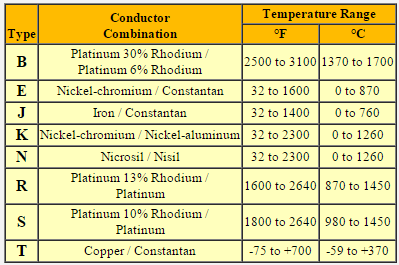
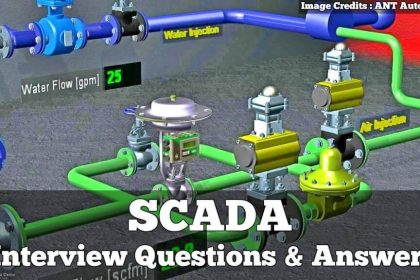


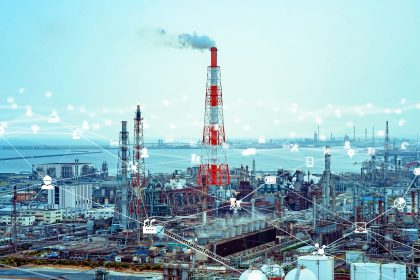
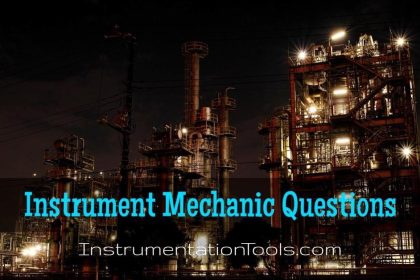

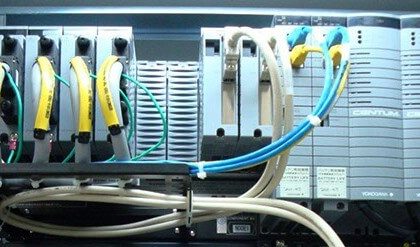
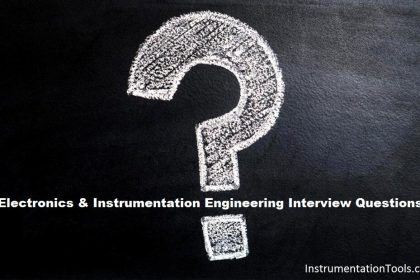
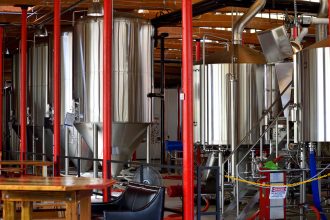
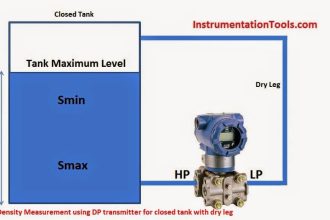
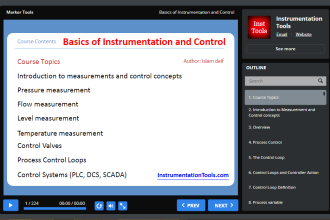

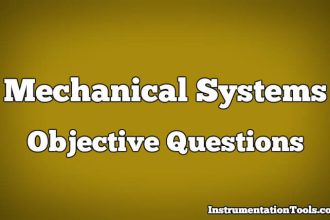
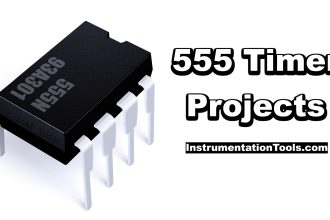



Very useful…
Control valve repair info plz
Good job
Samson control valve calibration procedure pls upload
sir pls teach the control loop of pressure sensor , temperature sensor , control valve and different types of output
Thanks